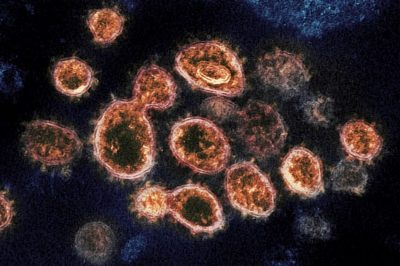Styrene: The Deadly Toxic Fume Behind Vizag Gas Leak Accident
Share

Photo used for illustration purpose only. (pxfuel)
AROUND 3 AM ON THURSDAY, residents of villages around Visakhapatnam flocked out of their homes looking for safer spaces as the air around them grew pungent and suffocated them. Gas leakage in one of the storage tanks at the LG Polymer plant at Gopalapatnam—outskirts of Visakhapatnam, disrupted everyone’s sleep. The plant reopened for the first time since COVID-19 lockdown.
As the plant activities were being resumed gas spread to around five villages within a radius of 3 kilometres, 11 people including a minor have died and around 1000 people have been reported sick.
The gas leaked—Styrene known as vinylbenzene or cinnamene or ethenylbenzene or phenylethylene is a synthetic hazardous and toxic chemical. Styrene is used manufacturing plastics and plastic-like compounds like polystyrene and resins, rubbers, fibreglass etc. Experts say, negligence before resuming the plant operations along with lack of proper storage, i.e. not at an optimal temperature, could have resulted in the gas leakage.
As people rushed out of their homes and informed the authorities, Police and National Disaster Response Force (NDRF) team started evacuating people to nearby safer villages and those who complained of breathing difficulties, and irritation of the eyes were rushed to the hospitals.
Dangers of Styrene
Styrene, a derivative of benzene is a probable carcinogen, can cause cancer. The effects on the human body depend on the duration of exposure and intensity of inhalation. As per the US-based Environment Protection Agency (EPA), short term effects of the gas include sore eyes, irritation of the skin and mucous membrane resulting in gastrointestinal and upper respiratory tract complaints.
Long term exposure leads to serious multiple complications and could increase the risk of leukaemia and lymphoma, the studies remain inconclusive in regards to styrene and increased cancer risk.
Government efforts to contain the harmful gas
To neutralize the effects of styrene, the state government has airlifted around 500 tonnes of inhibitors like PTBC—Para-tertiary butyl catechol. And water sprinklers have been used to dissipate gas emissions.
Gopalapatnam Police has registered a criminal case against the plant management and the National Green Tribunal has taken cognisance about the case. In addition, Andhra Pradesh High Court has issued notices to both the State and Central governments.
Andhra Pradesh Chief Minister, Y.S Jagan Reddy announced an ex-gratia payment of 1 Crore rupees each to the families of those killed in the tragedy. He also announced 10 lakhs and 25,000 each to those undergoing treatment on ventilator support and those treated as out-patients, respectively. Further, villages that were affected would be paid 10,000 rupees each.
This incident of Vizag gas leak brought back memories of a much more lethal and fatal accident of Bhopal Gas Tragedy of 1984. But this time, we hope proper inquiries are carried out and those responsible for the negligence are tried in all fairness in the courts.
Do you have a story for us?
We welcome your contribution at [email protected] Please include your name, city, state, and country.
Fact Analysis:
STSTW Media strives to deliver accurate information through careful research. However, things can go wrong. If you find the above article inaccurate or biased, please let us know at [email protected]













